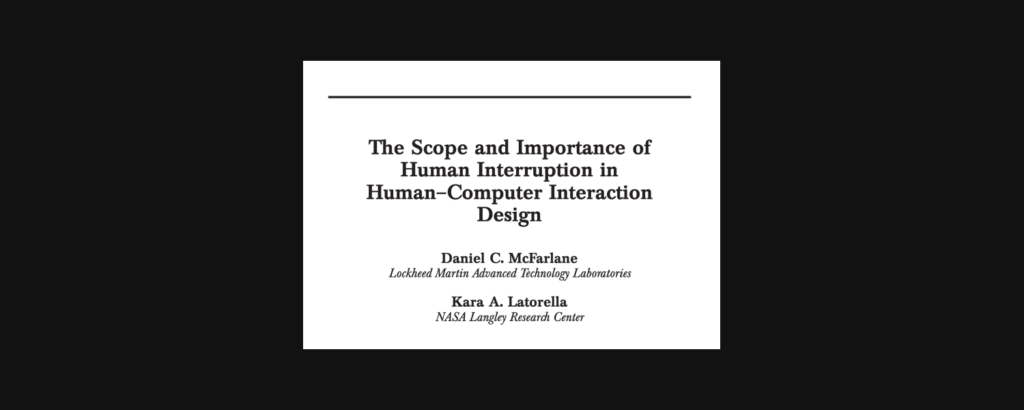IMAGE by Oksana Trygub
The future of design isn’t about grabbing attention at all costs. It’s about creating experiences that sustain both users and businesses in the long run.
Calm design is often dismissed as unrealistic. In an economy driven by engagement metrics, where businesses thrive on keeping users hooked, can a more mindful, less intrusive approach to design ever compete? While skepticism is valid, dismissing calm design outright overlooks its long-term benefits, for users, designers, and even businesses themselves. Let’s address the biggest concerns and explore why calm design is not only feasible but necessary.
The Economic Reality: Can Calm Design Survive?
Many argue that calm design clashes with the economic model that prioritizes engagement, retention, and ad revenue. If companies profit from maximizing time spent on their platforms, what incentive do they have to reduce stimulation and interruptions?
The answer lies in shifting priorities. Brands are already recognizing that trust and long-term user satisfaction matter. Companies like Apple and Google have introduced digital well-being tools, not just as ethical gestures but as responses to user demand. Excessive engagement may boost short-term metrics, but growing digital fatigue suggests that users will gravitate toward products that respect their attention. Businesses that integrate calm design can differentiate themselves, fostering loyalty and long-term success.
Can Calm Design Compete with Dopamine-Driven UX?
It’s true. Users keep returning to frictionless, addictive platforms like TikTok and Instagram despite complaints about endless scrolling. But is that because they truly prefer hyper-stimulation, or because alternatives aren’t widely available?
Calm design doesn’t mean eliminating engagement. It means designing experiences that are meaningful and sustainable. Consider meditation apps like Headspace, which leverage calm interfaces to encourage consistent use without overloading the user. Or platforms like Notion, which blend productivity with intentional design choices that reduce distraction. Users may be drawn to high-stimulation experiences, but they also seek balance. Calm design offers a counterpoint to digital burnout.

Janlert and Stolterman take a critical look at interactivity, challenging the assumption that it’s always beneficial. They explore how digital interfaces shape our attention and behavior, from the shift from physical knobs to touch gestures to the broader implications for our well-being. By dissecting the elements of interaction design, they argue that understanding interactivity’s core principles is essential for shaping its future. It’s a thought-provoking book for designers and technologists interested in the deeper impact of digital interactions.
Is “Disinteraction” a Universal Problem?
The term “disinteraction” describes users disengaging due to overwhelming digital experiences. While this is a compelling argument for calm design, is it truly universal? Digital natives, for example, might not experience disinteraction in the same way as those who remember a pre-digital world.
Rather than applying calm design indiscriminately, designers should tailor it to different contexts and demographics. Some users may need more structured engagement, while others benefit from quieter interfaces. The key is adaptability: giving users control over their digital environment rather than forcing a one-size-fits-all approach.
Friction vs. Usability: Where’s the Balance?
One of the most contentious aspects of calm design is the idea of “intentional friction.” If usability principles emphasize efficiency, isn’t adding friction counterintuitive?
Not necessarily. Friction, when applied thoughtfully, can enhance presence rather than create frustration. For example, Google’s Digital Wellbeing features encourage users to take breaks from their screens. Some financial apps require extra confirmation steps for large transactions to ensure users are making intentional decisions. When designed well, friction can guide users toward healthier interactions rather than becoming an obstacle.
Does Calm Design Reinforce Privilege?
Another valid critique is that calm design assumes users have the time and autonomy to engage mindfully with technology. What about gig workers who need efficiency? Users with cognitive disabilities who require clear, immediate feedback? People in high-pressure industries who rely on rapid digital interactions?
This doesn’t mean calm design should be abandoned. It means it must be inclusive. Rather than slowing down all interactions, designers can focus on reducing unnecessary distractions while maintaining accessibility. Customizable interfaces, flexible notification settings, and adaptive user flows ensure that calm design benefits a wider range of users rather than privileging a select few.

IMAGE by Oksana Trygub
The Proof: Where’s the Data?
Skeptics ask a fair question: Where’s the evidence that calm design works? While more research is needed, existing studies on digital well-being support its benefits.
- Research on cognitive load shows that excessive notifications and interruptions reduce productivity and increase stress.
- Studies on habit formation indicate that users engage more consistently with products that foster intentional use rather than compulsive behavior.
- Case studies from companies like Slack and Microsoft demonstrate that reducing digital noise improves workplace efficiency and satisfaction.
Companies that prioritize calm design aren’t just making ethical choices. They’re making strategic ones.
Where Calm Design Can Gain Traction
Calm design may not be the best fit for every industry. High-engagement sectors like entertainment or gaming thrive on stimulation. But in industries like healthcare, education, finance, and hospitality, where clarity and focus are crucial, calm design can be a game changer. The goal isn’t to eliminate engagement but to offer a more intentional way of interacting.
Small changes, like improving notification management, designing interfaces that reduce cognitive overload, and allowing users to control their attention, can have profound effects. Calm design isn’t about forcing a slower experience; it’s about giving users the choice to engage on their own terms.
A More Sustainable Approach to Design
Dismissing calm design as unrealistic ignores the shifting landscape of user needs. While engagement-driven design remains dominant, the growing push for digital well-being suggests that alternatives are not just possible but inevitable.
The real question isn’t whether calm design can compete. It’s whether companies can afford to ignore the demand for more mindful, user-respecting experiences. The future of design isn’t about grabbing attention at all costs. It’s about designing in a way that sustains both users and businesses in the long run.

This paper takes a closer look at how interruptions impact user experience and productivity. We all know the feeling—just as we get into a flow, a notification, alert, or message snaps us out of it. The research here explores what these disruptions do to our cognitive process and how they can be managed through better design. From smarter notification systems to user-controlled settings, the paper offers practical insights on creating interfaces that respect focus while still keeping users informed.

IMAGE by Oksana Trygub



